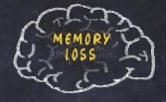
Humanity has always wanted to find life on an easy street but has found no easy street. What successful leaders have found was how to handle harder better. Your inner self knows when you are pushing to be closer to your potential, creating a surge of dopamine. Flooding your brain with dopamine and serotonin heightens feelings of euphoria, empathy, and love. As you transgress through life, the most rewarding achievements come from what is hard to accomplish. This application of life is not just reserved for bosses or leaders but applies to all of us. The role of a leader or boss today requires the ability to coach, develop, and understand that hard may create joy.
Entitlement
While so much of society is still looking for an effortless street, they don’t get it when the highest level of personal gratification is to achieve a higher level of expectation. Education and work history show we have created a cyclical redundancy of society having a values preponderance of entitlement. Which is entirely different from looking at how to conquer hard better. Hard, in comparison, must be a goal rather than the easy street of entitlement.
Achievement
Our lives begin by enjoying and seeking comfort. Our first desires are security, love, care, and nourishment. As our experiences and brains grow, we are more aware of things we can achieve. Our concept of achievement doesn’t become deterred by “what if I fail.” No one asks if you want to learn a language or if you want to stop crawling and learn to walk or maybe even run. The expectation is to learn even when we know it will be hard. By our own adaptation to life, we tackle the hard next steps. From this moment on, the celebrations begin with the rewards of when you took those first steps or said those first words. Does hard stop after these beginning challenging achievements of expectations by those surrounding you? Guidance becomes paramount to the future and willingness to compete in a complex world. Don’t misunderstand; hard is not a life culprit but is the answer to joy when you find peace, grace, and joy in seeing your life at your comfort level.
Accepting the Challenge
Measuring yourself to others and coveting what others may have versus what you don’t have identifies the ugly view as changing to entitlement. Understanding that in our journey, hard is better when we are willing to accept the challenge. You must realize you share your neighbors’ aspirations, which gives you the opportunity to be a servant leader and provide them with grace on the path of life they aspire to achieve. Parallel to this, your aspirations may differ for attaining hard better.
Over a lifetime, your journey to achievements is never-ending. Humans have a preponderance of the need to feel needed. Our inner soul doesn’t want us to be needy but to be needed. In your daily role, do you ask yourself what I can learn from this experience? Life allows us to accept and learn experiences we would like to practice and those we would not. Each day throughout life, you are surrounded by structures and authority. Inside the structure is your existence. Two primary tasks during what may be challenging times is what can I learn from this. moment.
When Does it Get Easier
In life we often look forward to when life is going to get easier. What we find out it never gets easier but what happens is we handle hard better. Success comes when we learn to handle hard things better. Coaching the men and women over the past 13 years with alcoholics, addicts, homeless, and dysfunctional families reveals they have never learned how to handle hard better. Responses of those who are in this state of existence are it is so hard, can’t do it, when is it going to get easier for me, why is it easier for other people, and when others see you handling hard things become harder. Those who aspire to success by conquering harder are seasoned to grasp the next challenge of hard to make it better. As coaches we prepare people for harder better. When they embark on their journey each one cannot sit on the escape zone of entitlement and what society has done to me. Those meeting with a new rewarding life learn how to handle hard better. If you have a meaningful pursuit in life it will never be easy. Those that succeed handle hard well. Don’t get discouraged know you will handle hard.
How Hard Defeats
During the time each person is in attendance at our mentoring sessions they are asked to write down their goals. This is like a brainstorming session delegated to each of their own wishes, needs, and value systems. The next step is not why these goals but the question is how many of you have achieved these goals. To their dismay they one by one admit they have not pursued or achieved their own goals. Why, when asked it isn’t possible and it would be impossible because it is to hard. Our mentoring and coaching dwells on the aspect of how to stop searching for easy street but to learn how to handle hard. Each one of these attenders possess potential they have not even discovered. They can dream of legitimate goals and pursuits but have never embarked on their journey to realize their individual potentials.
Love Yourself
It is important you get to know yourself. The power of surrender is easy to accept and realize the pitfalls of surrender and its affects on your work, family, and personal life challenges. The longer you don’t use your full potential the harder it seems to find a way to get above the pitfalls. Their view of difficulty should be converted to an opportunity.
Summary
For those who have conquered their fears and the acceptance of being to hard they have reached a revelation of success. It is important to accept that the pursuit of your unseen accomplishments will now be diminished if you understand you can’t do it alone. When facing hard better it is essential you are cognizant of your physical, mental, and spiritual state. Mentoring from someone you trust will help to balance these aspects with your coach to overcome the current hard and future hard. Be ready to seek out your coach, teacher, boss, pastor or an organization familiar with helping you achieving hard better.
Conclusion
Coaching presents a diverse group of people who need your help. This summary gives you a starting point of how to address people who are in quandary of how to move on to achieving at higher levels. During the pas 14 years our mentors have seen miraculous success with people who no one would have given a chance:
All of the following individuals are real people who have met with great success.
Gang Leader, alcoholics, addicts, dysfunctional families, homeless, incarcerated, absentee fathers and those searching for a life change.
For those who take the time make a difference! God Bless You All!











 So much time in traditional schools we have spent on the content. Theory, labs, materials, equipment, teacher and student that made up the structure of the classroom. In the last fifteen years the walls of our classrooms have come down. Our focus was content which I call the what for a classroom. The pieces to the course puzzle were predominantly content.
So much time in traditional schools we have spent on the content. Theory, labs, materials, equipment, teacher and student that made up the structure of the classroom. In the last fifteen years the walls of our classrooms have come down. Our focus was content which I call the what for a classroom. The pieces to the course puzzle were predominantly content.  Stagnant content does not give way to the reality of the diversity of our students who consume the content. Content alone does not cause for equity in learning behaviors of the students. One variable of being the change agent for success becomes the teacher. The who is the important tool of how all this will work with the diversity of learning. Our person who is the who which will determine the how content and style will be communicated in the best possible environment. As we look back at the schools with the three who’s of acceptable non-acceptable and exceeds expectations they all become part of the plan for school improvement.
Stagnant content does not give way to the reality of the diversity of our students who consume the content. Content alone does not cause for equity in learning behaviors of the students. One variable of being the change agent for success becomes the teacher. The who is the important tool of how all this will work with the diversity of learning. Our person who is the who which will determine the how content and style will be communicated in the best possible environment. As we look back at the schools with the three who’s of acceptable non-acceptable and exceeds expectations they all become part of the plan for school improvement. 





